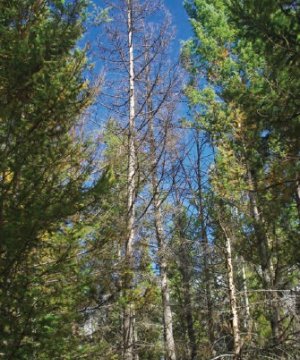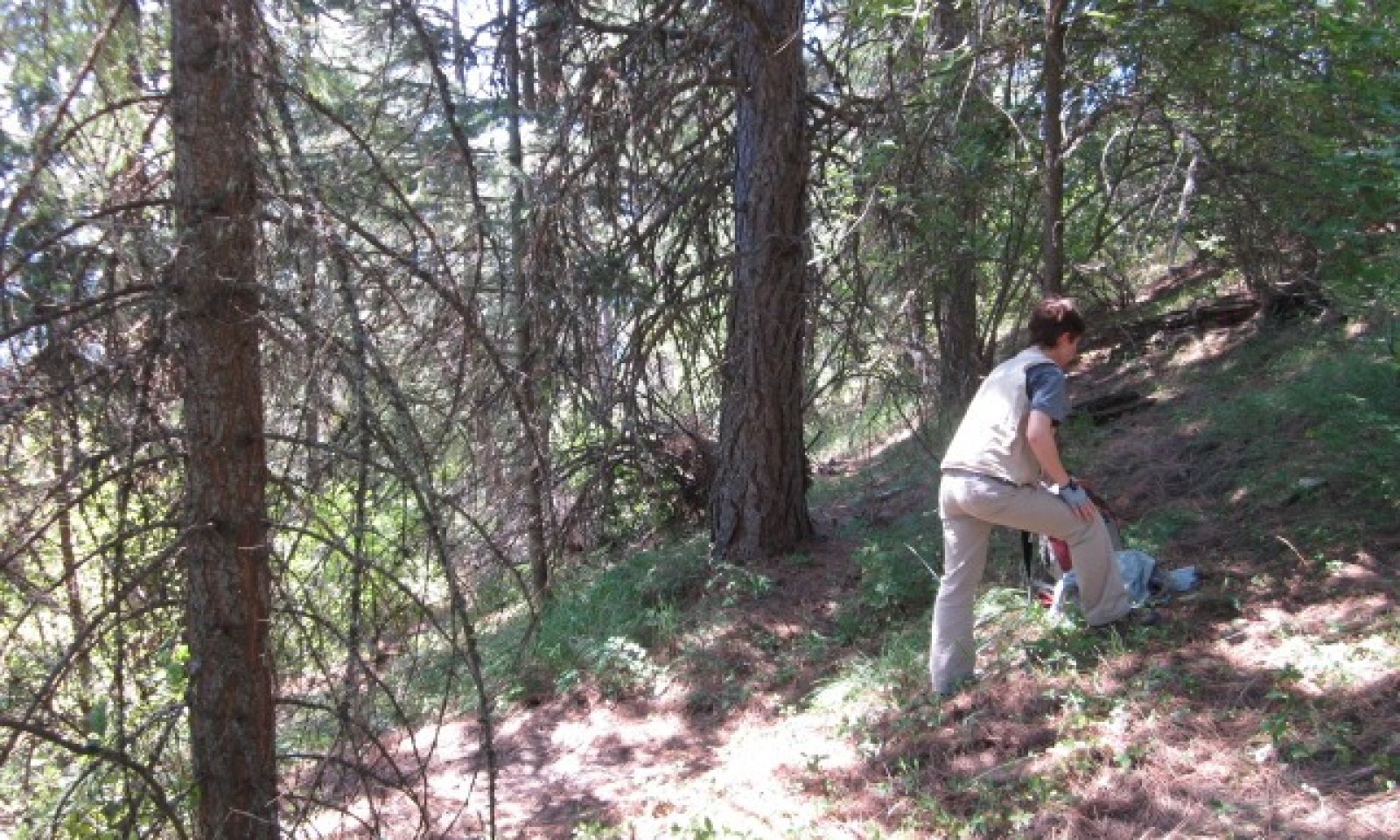
Vitrandic Hills and Mountains 24-30" PZ Frigid Western Bitterroot Foothills
Scenario model
Current ecosystem state
Select a state
Management practices/drivers
Select a transition or restoration pathway
- Transition T1A More details
- Transition T1B More details
- Transition T1C More details
- Restoration pathway R2A More details
- Restoration pathway R3A More details
-
No transition or restoration pathway between the selected states has been described
Target ecosystem state
Select a state
Description
Frequent ground fires every 10 – 20 years create an open stand of mature ponderosa pine, western larch, and some Douglas-fir. Understory is a mix of grass and shrubs. Most of the scattered regeneration is pine and larch with some Douglas-fir and grand fir. Most of the herb component is pine grass with scattered ninebark, oceanspray, and snowberry. With infrequent fire the mature stand becomes denser and Douglas-fir and grand fir regeneration increases. Fire exclusion (State 2) for several years creates a multi-story Douglas-fir –grand fir stand with remnant pine and larch. Stands in this condition are more susceptible to stand replacing fires. Amillaria root rot mortality (State 4) can increase in Douglas-fir and grand fir creating deciduous tree/shrub pockets. Severe fires can lead to shrub dominated areas for long time periods (State 3).
Submodel
Description
This state develops with extended lack of fire and consists of all aged Douglas-fir and grand fir with scattered old ponderosa pine and western larch remnants. Tree canopy is multi-storied. Tree age ranges from 60-125+ years. Windthrow and root rot pockets create openings for shrub or tree regeneration. Many snags and down logs can be present. High fuel loads and ladder fuels create conditions for stand replacing fire.
Submodel
Description
Reoccurring severe fire damages soil surface and shrubs dominate site for extended time period. Tree regeneration is sporadic or nonexistent. Ceanothus species would be a key component in this state. Other shrub species would include snowberry, ninebark, oceanspray, Douglas-maple, and Scouler willow.
Submodel
Description
Large to small pockets of Armillaria root rot have killed Douglas-fir and grand fir pole to mature stands leaving site occupied by deciduous trees and shrubs and scattered conifers. Reestablishment to pine, larch, and fir overstory may take over 50 years depending on disturbance or root rot longevity. Ponderosa pine and western larch are more resistant to this root rot, however, seedlings and saplings can be killed.
Root rot more severe on warm south and west exposures with metisedimentary and quartzite parent materials and overlying soils with less than 7 inches of volcanic ash (Vitrandic classification).
Armillaria root disease causes by the fungus Armillaria ostoyae along with other root diseases such as Laminated root rot (Phellinus weirii) and Annosum root disease (Heterobasidion annosum) kill the overstory Douglas-fir and grand fir creating brush fields of aspen, maple, willow, ninebark, and oceanspray. Sporatic conifer tree regeneration may occur with the susceptibility of the mortality due to root disease. Ponderosa pine and western larch are less susceptible with potential establishment and survival. It may take several years for a mature conifer overstory to dominate these areas depending on the root disease longevity.
Submodel
Mechanism
Reoccurring severe fire with soil degradation keeping a shrubfield state
Mechanism
Root rot pockets killing DF and GF creating a deciduous vegetation state
Mechanism
Selective overstory removal with prescribed burning
Model keys
Briefcase
Add ecological sites and Major Land Resource Areas to your briefcase by clicking on the briefcase (![]() ) icon wherever it occurs. Drag and drop items to reorder. Cookies are used to store briefcase items between browsing sessions. Because of this, the number of items that can be added to your briefcase is limited, and briefcase items added on one device and browser cannot be accessed from another device or browser. Users who do not wish to place cookies on their devices should not use the briefcase tool. Briefcase cookies serve no other purpose than described here and are deleted whenever browsing history is cleared.
) icon wherever it occurs. Drag and drop items to reorder. Cookies are used to store briefcase items between browsing sessions. Because of this, the number of items that can be added to your briefcase is limited, and briefcase items added on one device and browser cannot be accessed from another device or browser. Users who do not wish to place cookies on their devices should not use the briefcase tool. Briefcase cookies serve no other purpose than described here and are deleted whenever browsing history is cleared.
Ecological sites
Major Land Resource Areas
The Ecosystem Dynamics Interpretive Tool is an information system framework developed by the USDA-ARS Jornada Experimental Range, USDA Natural Resources Conservation Service, and New Mexico State University.






